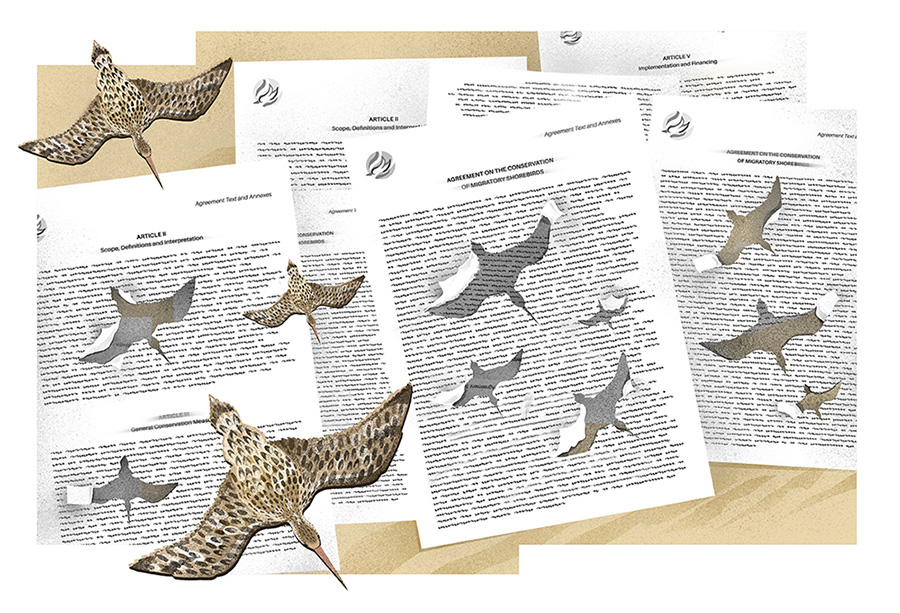Halting species extinction and ecosystem degradation require proactive decisions. We make decisions every day, often without thinking, but the decisions encountered in conservation are often perplexing. They include decisions like, how to save a species threatened with extinction? How to protect species and ecosystems while also considering the needs of people? When to stop monitoring and implement an uncertain solution? They take place against a backdrop of cumulative anthropogenic pressures, chronic underfunding, and a broader social, cultural and economic landscape. They also involve differing values, complex alternatives, scarce resources, urgency, and uncertainty.
When faced with such challenging decisions, the rapid, intuitive way we make decisions is often not our friend. It can lead us to delay decisions, pick the first alternative that comes along, or flip a coin and hope for the best. But using these strategies to manage species and ecosystems can lead to bad outcomes. For example, species may go extinct while waiting for the action to be taken, or scarce funds may be wasted on ineffective measures.
So, what can be done? In a recent paper in the journal Conservation Biology, we suggest that theories, frameworks, and tools from decision science can help. Decision science structures thinking so that decisions are informed, transparent, and defensible, and the alternatives identified improve the chance of achieving desired outcomes. Decision science is not new to conservation, but there are barriers to uptake. These include a lack of training; confusing terminology; a perception that applying decision science is complex, time-consuming and costly; and not knowing where to start.
Our paper seeks to overcome these barriers to help conservation practitioners navigate the disparate decision science literature better and improve the rigour and feasibility of applying decision science in conservation contexts.
We contend that better outcomes start with learning to think through decisions by decomposing decisions into manageable components. This process is called decision analysis (or structured decision-making) and lies at the heart of decision science. The steps can be loosely summarised as follows:
- Define the decision to be made
- Specify what we want to achieve (i.e., values of importance)
- Identify the alternatives we can take to achieve values of importance.
- Estimate how alternatives perfor on values of importance
- Assess trade-offs
- Pick the best option
Iterating through these steps helps ensure we’re working on the right decision and that all values of importance are identified. This process can also help to design alternatives that better achieve these values. Rapidly iterating through these steps with the information at hand may reveal a suitable alternative, at which point the decision can be made. If this doesn’t occur, the initial iteration can provide insights for subsequent iterations (such as a value that needs to be considered).

At each step, a number of decision-support tools can be drawn on. They include qualitative tools, such as brainstorming, conceptual mapping, and strategy tables; quantitative tools, such as data, models, structured expert elicitation; and tools for dealing with trade-offs. In addition, there are decision support frameworks such as Priority Threat Management framework and Systematic Conservation Planning which can help to navigate through multiple steps of a decision analysis for a range of conservation decisions. Our paper simplifies the choices between the vast array of tools and frameworks by outlining to which steps and to what problems each may be helpful.
For those facing difficult conservation decisions, our paper provides a much-needed contextual framework of key terms and prescriptive guidance for getting started with decision science. This will help to illuminate a pathway for turning these difficult problems into timely, effective, and beneficial outcomes. As a bonus, many of the steps outlined are universal and will help improve decision-making for any difficult decision encountered.
Positionality statement: The paper reflects the views and experiences of 24 authors who primarily work in Australia, Canada, the United Kingdom and the USA, and who have been primarily trained in western (ecological) sciences. The authors have diverse demographic identities within these bounds, and diverse experience with decision science. Our hopes in preparing this paper were to: 1) Provide a simple entry point to decision science, so that difficult conservation decisions are more tractable; 2) Diversify who can access and apply decision science; 3) Provide a foundation for critical appraisal of the field; and 4) Stimulate discussion and contrast of the field and other ways of making decisions for biodiversity conservation.
Further Reading
Hemming, V., A. E. Camaclang, M. S. Adams, M. Burgman, K. Carbeck, J. Carwardine, I. Chades et al. 2021. An Introduction to Decision Science for Conservation. Conservation Biology 36(1): e13868.
https://doi.org/10.1111/cobi.13868






